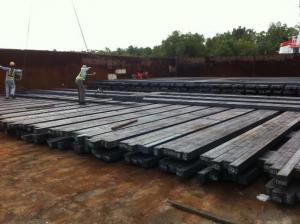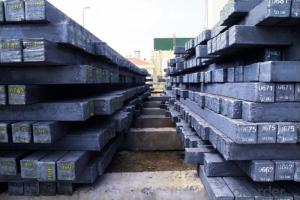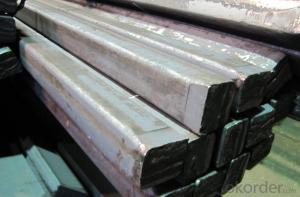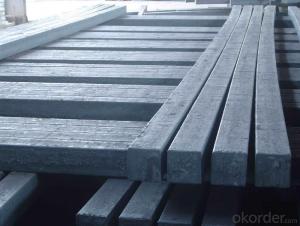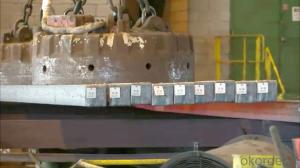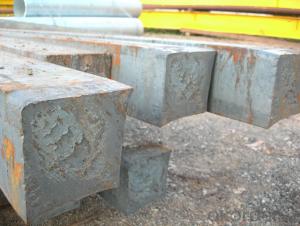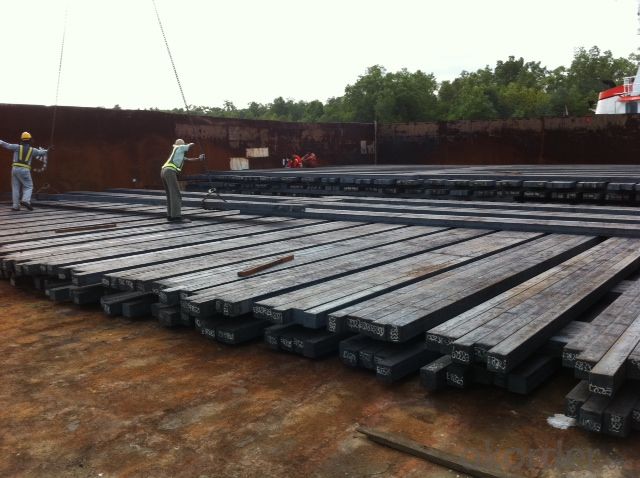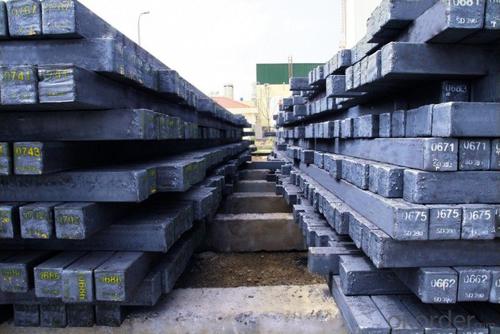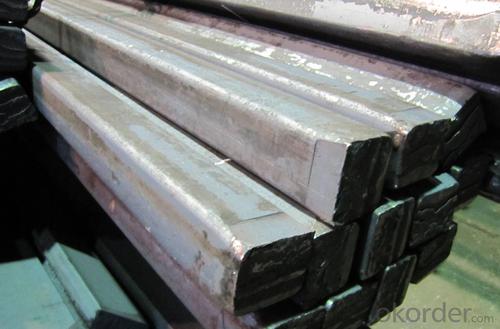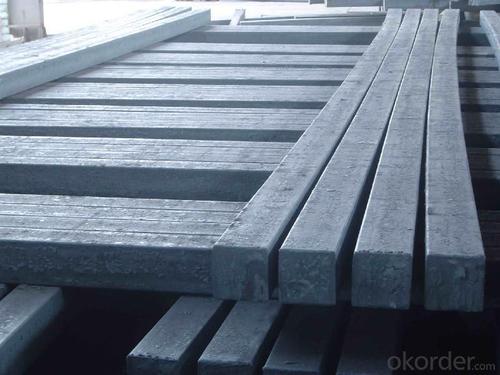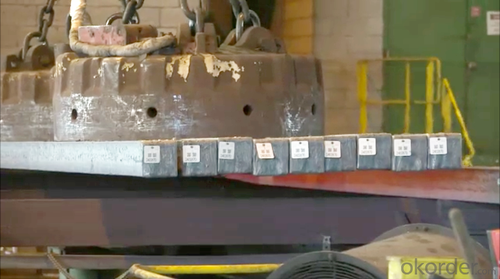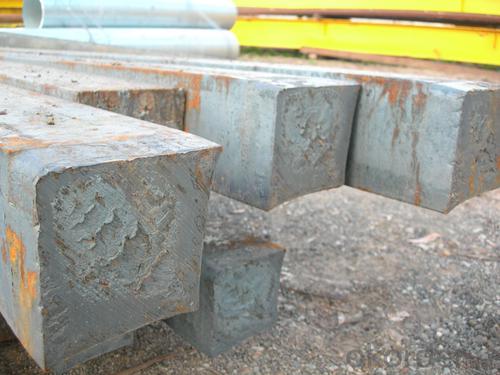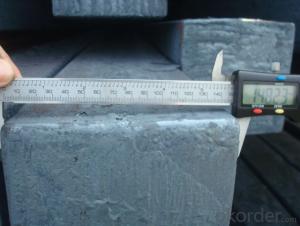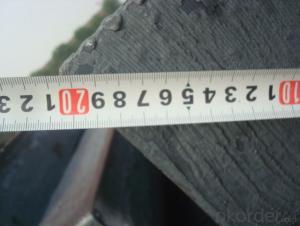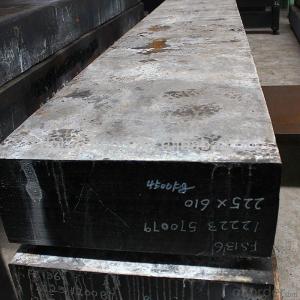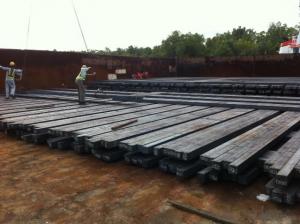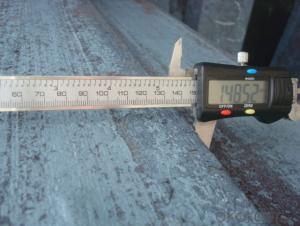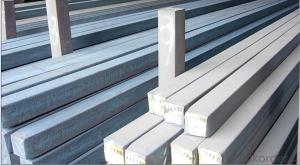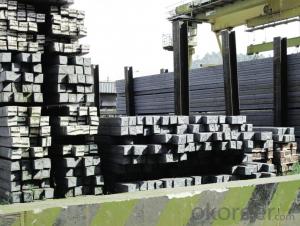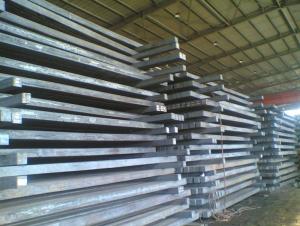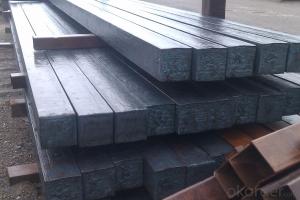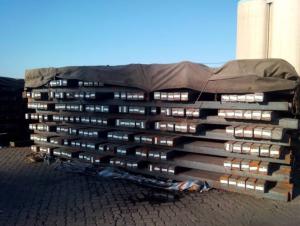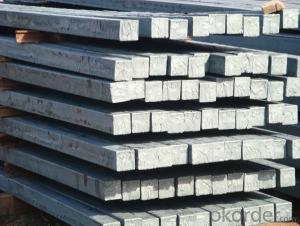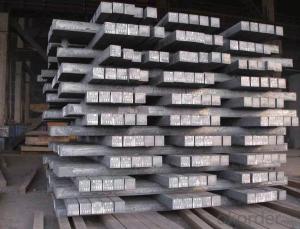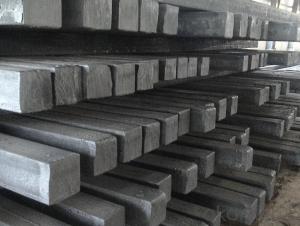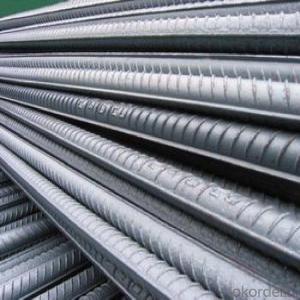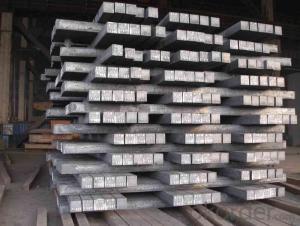Hot Rolled Square Steel Billet 3SP Standard 150mm
- Loading Port:
- Shanghai
- Payment Terms:
- TT OR LC
- Min Order Qty:
- 2000 m.t.
- Supply Capability:
- 10000 m.t./month
OKorder Service Pledge
OKorder Financial Service
You Might Also Like
Structure of Hot Rolled Square Steel Billet 3SP Standard 150mm
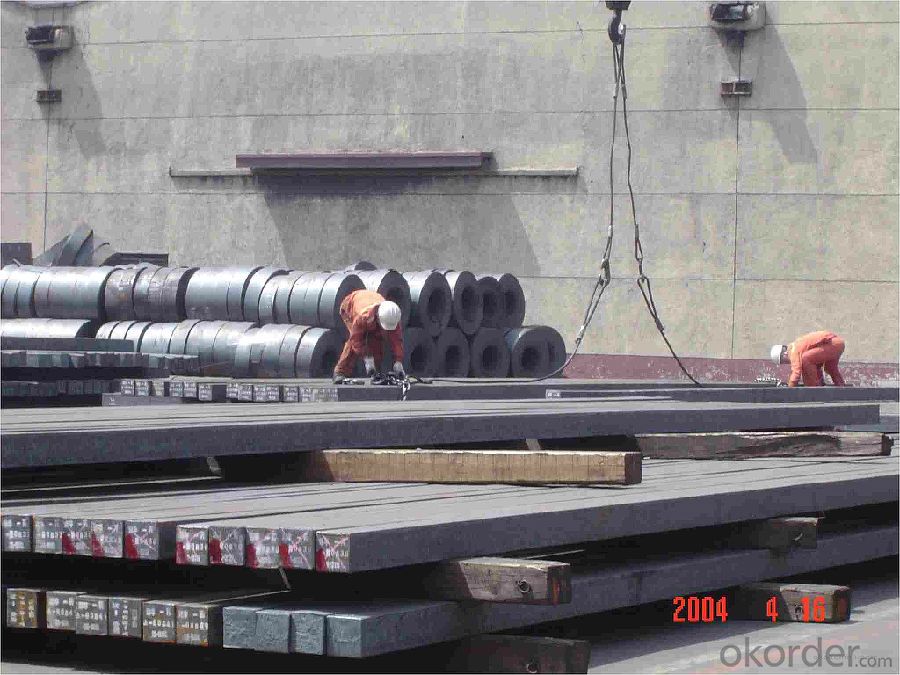
Description of Hot Rolled Square Steel Billet 3SP Standard 150mm
PPGI is made by cold rolled steel sheet and galvanized steel sheets as baseplate, through the surface pretreatment (degreasing, cleaning, chemical conversion processing), coated by the method of continuous coatings (roller coating method),
and after roasting and cooling. Zinc coating: Z60, Z80, Z100, Z120, Z180, Z275, G30, G60, G90
Alu-zinc coating: AZ60, AZ80, AZ100, AZ120, AZ180, G30, G60, G90
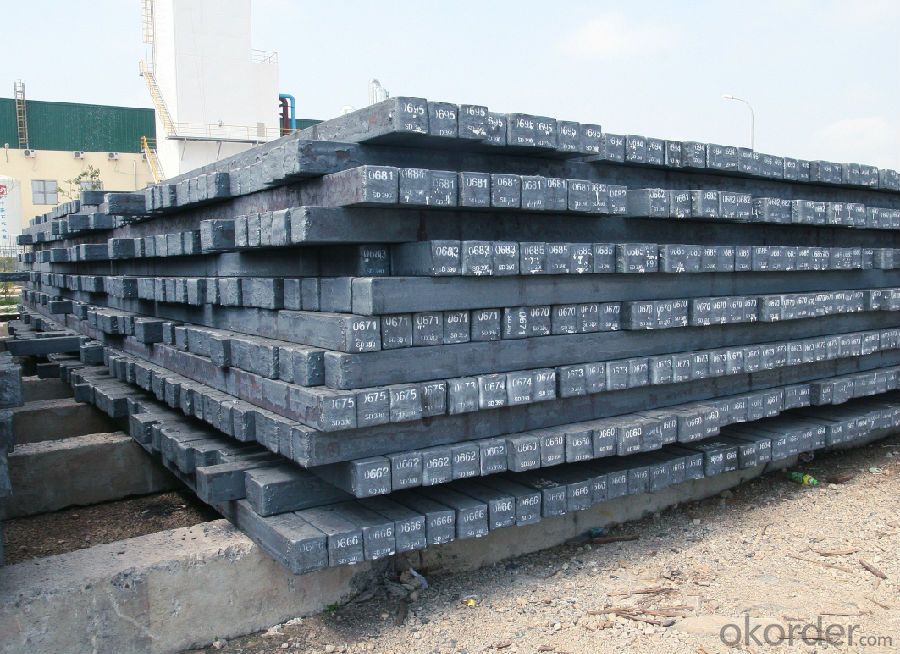
Main Feature of Hot Rolled Square Steel Billet 3SP Standard 150mm
1) Excellent corrosion resistance: The zinc layer provides a good protection of Pre-painted Galvanizeed Steel Sheet.
2) High heat resistance: The reflective surface of the material aids in efficiently reflecting the sunlight away and in turn reducing the amount of heat transmitted. The thermal reflectivity converts into energy savings.
3) Aesthetics: Pre-Painted Galvanized steel sheet is available in plethora of patterns and multiple sizes as per the requirements that given by our customers.
4) Versatility: can be used in the various areas.Standard seaworthy export packing: 3 layers of packing, inside is kraft paper, water plastic film is in the middle and outside GI steel sheet to be covered by steel strips with lock, with inner coil sleeve.
Applications of Hot Rolled Square Steel Billet 3SP Standard 150mm
1) Automotive bodies: filters, fuel tanks, etc.
2) Construction materials: roofings, welding pipes,
3) Electric and electronic appliances: computer cans, etc.
4) Steel cans: containers, etc.
5) Steel furniture: washing machines, refrigerators, microwaves, etc.
6) Drums
7) Office equipment: printer, recorders, etc.
8) Motors and transformers
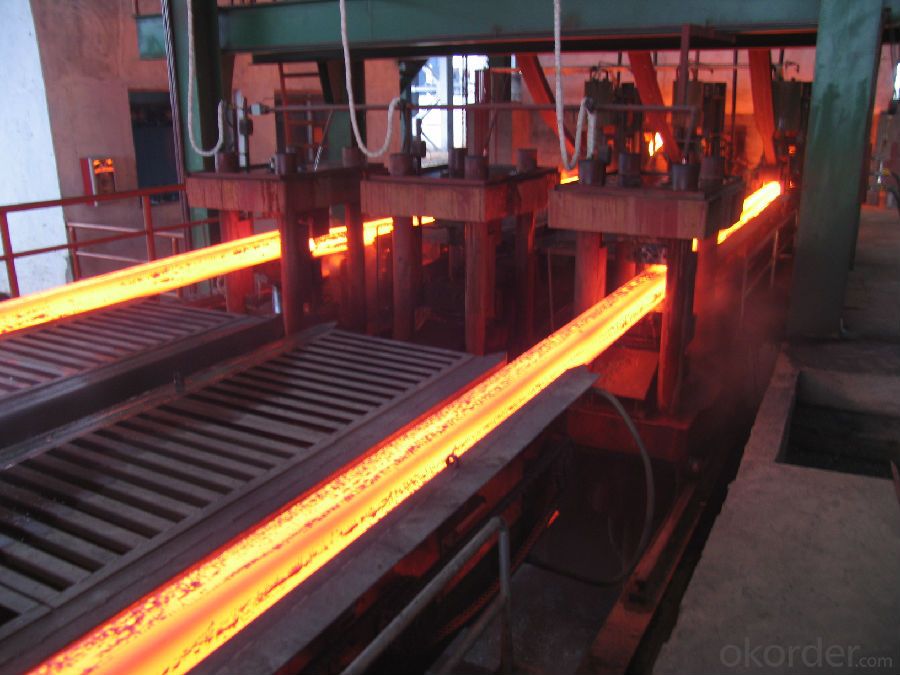
Specifications of Hot Rolled Square Steel Billet 3SP Standard 150mm
| Classified symbol | Yield Point Minimum N/mm2 | Tensile Strength Minimum | Elongation Minimum % | Application | ||||
| N/mm2 | Nominal Thickness mm (t) | |||||||
| JIS | Yogic | 0.25-0.4 | 0.4-0.6 | 0.6-1.0 | 1.0-1.6 | |||
| G3312 | specification | |||||||
| CGCC | CGCC | -205 | -270 | -20 | -21 | -24 | -24 | Commercial |
| CGCD | CGCD | --- | 270 | --- | 27 | 31 | 32 | Drawing |
| --- | CG340 | 245 | 340 | 20 | 20 | 20 | 20 | Structural |
| CGC400 | CG400 | 295 | 400 | 16 | 17 | 18 | 18 | Structural |
| CGC440 | CG440 | 335 | 440 | 14 | 15 | 16 | 18 | Structural |
| CGC490 | CG490 | 365 | 490 | 12 | 13 | 14 | 16 | Structural |
| CGC570 | CG570 | 560 | 570 | --- | --- | --- | --- | Structural |
| ASTM Designation | Yield Point Minimum | Tensile Strength Minimum | Elongation Minimum % | Application | Q/BQB 445-2004(China standard) | ASM A653/A653M | JISG 3312 | |
| ksi(MPa) | ksi(MPa) | TDC51D+Z | (CS TYPE A+Z) | CGCC | ||||
| A653(M)-99 CS TYPE A,B,C | --- | --- | --- | Commercial | TDC52D+Z | CGCD | ||
| A653(M)-99 FS | --- | --- | --- | Lock Forming | TS250GD+Z | (G250+Z) | - | |
| A653(M)-99 DS | --- | --- | --- | Drawing | TS300GS+Z | (G300+Z) | CGC 400 | |
| A653(M)-99 SS Grade33(230) | 33(230) | 45(310) | 20 | Structural | TS350GD+Z | (G350+Z) | CGC490 | |
| A653(M)-99 SS Grade37(255) | 37(255) | 52(360) | 18 | Structural | TS550GD+Z | (G550+Z) | CGC570 | |
| A653(M)-99 SS Grade40(275) | 40(275) | 55(380) | 16 | Structural | ||||
| A653(M)-99 SS Grade50(345) | 50(345) | 65(450) | 12 | Structural | ||||
| A653(M)-99 SS Grade80(550) | 80(550) | 82(570) | --- | Structural | ||||
FAQ of Hot Rolled Square Steel Billet 3SP Standard 150mm
We have organized several common questions for our clients,may help you sincerely:
1. How Can I Visit There?
Our company is located in Tianjin City, China, near Beijing. You can fly to Tianjin Airport Directly. All our clients, from home or aboard, are warmly welcome to visit us!
2. How Can I Get Some Sample?
We are honored to offer you sample.
3. Why choose CNBM?
1, ISO, BV, CE, SGS approved.
2, Competitive price and quality.
3, Efficient service team online for 24 hours.
4, Smooth production ability(50000tons/month) .
5, quick delivery and standard exporting package.
6, Flexible payment with T/T, L/C, Paypal, Kunlun bank, etc.
- Q: What are the different types of forging processes used for shaping steel billets?
- Steel billets can be shaped using various forging processes. Among these are open die forging, closed die forging, and ring rolling. Open die forging involves compressing the steel billet between two flat dies to give it shape. This method is suitable for larger and simpler shapes as the steel is not fully enclosed by the dies, allowing for flexibility in the final product's shape. Closed die forging, also known as impression die forging, utilizes specially designed dies with cavities in the desired shape of the final product. The steel billet is placed between these dies and compressed, causing the metal to flow and take on the shape of the cavities. This process is ideal for more intricate shapes and provides greater precision and control over the final result. For shaping steel billets into rings, ring rolling is employed. This process involves placing the billet on a mandrel and applying pressure with a series of rollers, causing the billet to deform and acquire the shape of a ring. Ring rolling is commonly used in the production of seamless rolled rings, which find extensive application in industries like aerospace, oil and gas, and power generation. In conclusion, the selection of the appropriate forging process depends on factors such as the complexity of the desired shape, the level of precision required, and the specific needs of the end application.
- Q: What are the main factors affecting the formability of alloy steel billets?
- The main factors affecting the formability of alloy steel billets are the composition of the alloy, the temperature at which the billets are formed, the strain rate during deformation, and the presence of impurities or defects in the material.
- Q: How do steel billets contribute to the overall noise reduction of a structure?
- There are several ways in which steel billets can help reduce the overall noise in a structure. Firstly, they are commonly used in constructing walls, floors, and ceilings, which are important components for sound insulation. Steel's density and rigidity effectively block and absorb sound waves, preventing them from passing through and reducing noise transmission. Moreover, steel billets can be employed to make acoustic panels that are specifically designed to enhance sound absorption and reduce reverberation within a space. These panels can be strategically placed in areas where noise is a concern, such as conference rooms, auditoriums, or music studios. By incorporating steel billets into these panels, their acoustic properties are improved, resulting in better noise reduction. Additionally, steel billets can be utilized in manufacturing doors and windows. These elements often contribute to sound leakage due to their vulnerability to vibrations and poor sealing. By using steel billets in their construction, the doors and windows become stronger and more stable, reducing the amount of sound that can pass through them. Furthermore, employing steel frames and gaskets can create a tighter seal, further minimizing noise infiltration. In conclusion, steel billets contribute to the overall noise reduction of a structure by providing the necessary density, rigidity, and acoustic properties to effectively block, absorb, and reduce sound transmission. Whether used in construction materials, acoustic panels, or doors and windows, steel billets play a vital role in creating a quieter and more comfortable environment.
- Q: How are steel billets formed into other shapes?
- Steel billets are formed into other shapes through a process called hot rolling, where the billets are heated and passed through a series of rollers to gradually shape them into desired forms such as bars, rods, or sheets.
- Q: How do steel billets contribute to the manufacturing of HVAC systems?
- Steel billets play a crucial role in the manufacturing of HVAC (Heating, Ventilation, and Air Conditioning) systems. These systems require robust and durable components to ensure efficient operation and longevity, and steel billets provide the necessary foundation for such components. Firstly, steel billets are used to create the main structural framework of HVAC systems. The framework, often referred to as the casing or housing, provides support and protection for the internal components, such as the heat exchangers, fans, and coils. Steel billets offer high strength and rigidity, making them ideal for creating a sturdy and reliable framework that can withstand the various stresses and strains encountered during the system's operation. Moreover, steel billets are also used to manufacture various internal components of HVAC systems. For example, the heat exchangers, which are responsible for transferring heat between the air and the refrigerant, are commonly made from steel billets. The high thermal conductivity and corrosion resistance of steel make it an excellent choice for these critical components, ensuring efficient heat transfer and long-term performance. Additionally, steel billets are utilized in the production of ductwork. Ductwork is the network of pipes or channels that distribute conditioned air throughout a building. Steel billets are often rolled and formed into the required shapes to create the ducts. The strength and durability of steel ensure that the ductwork can withstand the pressure differentials and mechanical stresses associated with air movement, maintaining the integrity of the system and preventing leaks. Furthermore, steel billets are essential for manufacturing HVAC system supports and brackets. These components are used to mount various equipment, such as air handling units or condensing units, securely. Steel's strength and load-bearing capacity make it an ideal material for ensuring the stability and proper installation of these crucial elements. In conclusion, steel billets are integral to the manufacturing of HVAC systems. They provide the necessary strength, durability, and thermal properties required for the structural framework, internal components, ductwork, and supports. Without steel billets, it would be challenging to produce HVAC systems that deliver efficient heating, ventilation, and air conditioning to buildings.
- Q: What is the role of steel billets in the production of steel bars?
- Steel billets have a crucial role in the production of steel bars, as they serve as semi-finished forms of steel typically cast in square or rectangular shapes. These billets are essential for creating various steel products, including steel bars. The main purpose of steel billets is to undergo further processing and transformation into steel bars through a series of manufacturing steps. After obtaining the steel billets, they undergo a process called hot rolling. This process involves subjecting the billets to high temperatures and passing them through rolling mills, which shape and elongate them into desired forms like round bars, square bars, or hexagonal bars. During the hot rolling process, the steel billets experience extreme heat and pressure, causing them to deform and elongate. This process improves the mechanical properties of the steel, such as strength, toughness, and ductility. Additionally, it refines the grain structure of the steel, enhancing its overall quality and performance. Steel bars produced from steel billets have wide applications in industries like construction, manufacturing, infrastructure, and automotive. They serve as structural components in buildings, bridges, and other infrastructure projects, as well as in the production of machinery, tools, and equipment. In summary, steel billets play a critical role in the production of steel bars. They act as the starting material for the manufacturing process and go through hot rolling to transform into desired shapes and sizes. The resulting steel bars find extensive use in various applications due to their improved mechanical properties and enhanced quality.
- Q: What are the main uses of steel billets?
- Steel billets are primarily used as raw material in the manufacturing of various steel products, including bars, rods, wire, tubes, and structural components. They are also commonly utilized in the production of seamless pipes, automotive parts, machinery, and construction materials.
- Q: Can steel billets be used in the production of sculptures and artwork?
- Sculptures and artwork can indeed utilize steel billets. Steel, being a versatile and malleable material, empowers artists to fashion one-of-a-kind and intricate designs. The inclusion of steel billets in sculptures and artwork guarantees sturdiness, resilience, and the potential for expansive installations. Artists can skillfully mold, fuse, and manipulate steel billets to generate an extensive array of sculptures, ranging from abstract shapes to figurative representations. The utilization of steel also contributes a contemporary and audacious touch to the artwork, thanks to its industrial aesthetic. Moreover, artists can opt to employ diverse techniques such as painting, patina, or polishing to further enrich their creative vision. In summary, steel billets present an exhilarating prospect for artists to delve into and stretch the boundaries of their artistic expression.
- Q: How does the market demand for steel billets fluctuate over time?
- The market demand for steel billets fluctuates over time due to various factors such as economic conditions, industrial growth, infrastructure projects, and global trade dynamics. During periods of economic growth and expansion, there is typically an increased demand for steel billets as it is a crucial raw material for construction, manufacturing, and transportation sectors. Conversely, during economic downturns or recessions, the demand may decrease as construction projects are delayed, manufacturing activities reduce, and consumer spending declines. Additionally, market demand for steel billets can be influenced by changes in government policies, trade tariffs, and technological advancements in alternative materials. Overall, the market demand for steel billets is subject to cyclical fluctuations driven by economic conditions and industrial activities.
- Q: What are the different types of steel billet forging machines?
- There are several different types of steel billet forging machines available in the market today. These machines are designed to efficiently shape and form steel billets into desired shapes and sizes. Here are some of the common types of steel billet forging machines: 1. Hydraulic Forging Press: This type of machine uses hydraulic power to exert force on the steel billet, allowing it to be forged into the desired shape. Hydraulic forging presses are known for their high force capabilities and versatility in handling different sizes of billets. 2. Mechanical Forging Press: Mechanical forging presses use mechanical power, such as flywheels or eccentric mechanisms, to exert force on the billet. These machines are known for their reliability and precision, making them suitable for high-volume production. 3. Screw Press: Screw presses utilize a rotating screw mechanism to apply force on the steel billet. They are characterized by their high-speed operation and efficient energy usage. Screw presses are commonly used for forging small to medium-sized billets. 4. Hammer Forging Machine: Hammer forging machines use a hammering action to shape the steel billet. There are various types of hammer forging machines, including steam hammers, air hammers, and hydraulic hammers. These machines are known for their high impact force, making them suitable for heavy-duty forging. 5. Upsetter: Upsetters, also known as upsetting machines, are specifically designed for forging the ends of steel billets. They use a vertical or horizontal ram to apply pressure on the billet, causing it to increase in diameter and length. Upsetters are commonly used for producing forged components with thickened ends. 6. Radial Forging Machine: Radial forging machines employ a rotating roller to apply radial force on the steel billet. This force causes the billet to increase in diameter while maintaining its original length. Radial forging machines are often used for producing seamless rings and other cylindrical components. It's important to note that the choice of the most suitable steel billet forging machine depends on factors such as the size and shape of the billet, desired production volume, and specific requirements of the final product. Each type of machine has its own advantages and limitations, so it is crucial to consider these factors when selecting the appropriate forging machine for a given application.
Send your message to us
Hot Rolled Square Steel Billet 3SP Standard 150mm
- Loading Port:
- Shanghai
- Payment Terms:
- TT OR LC
- Min Order Qty:
- 2000 m.t.
- Supply Capability:
- 10000 m.t./month
OKorder Service Pledge
OKorder Financial Service
Similar products
Hot products
Hot Searches
Related keywords
